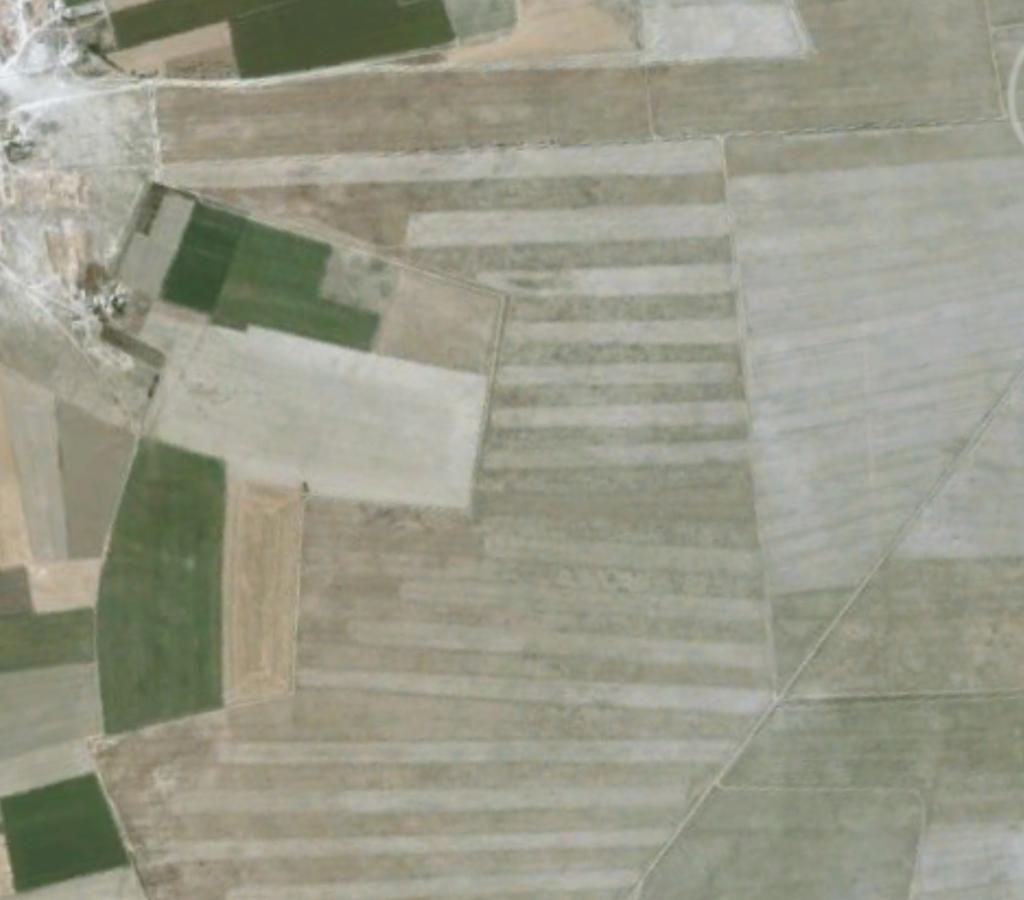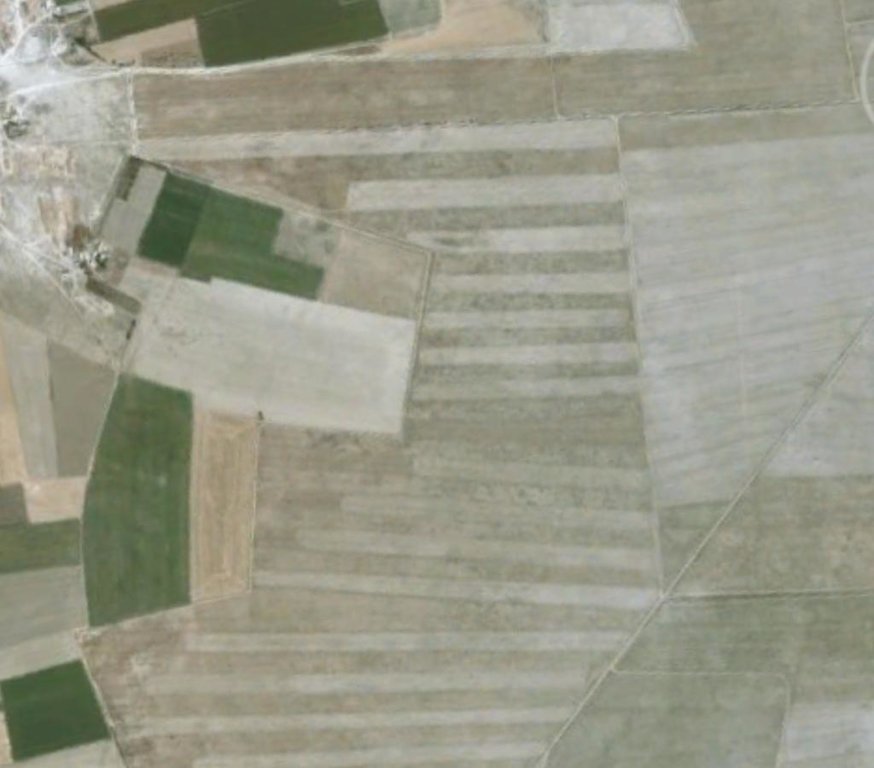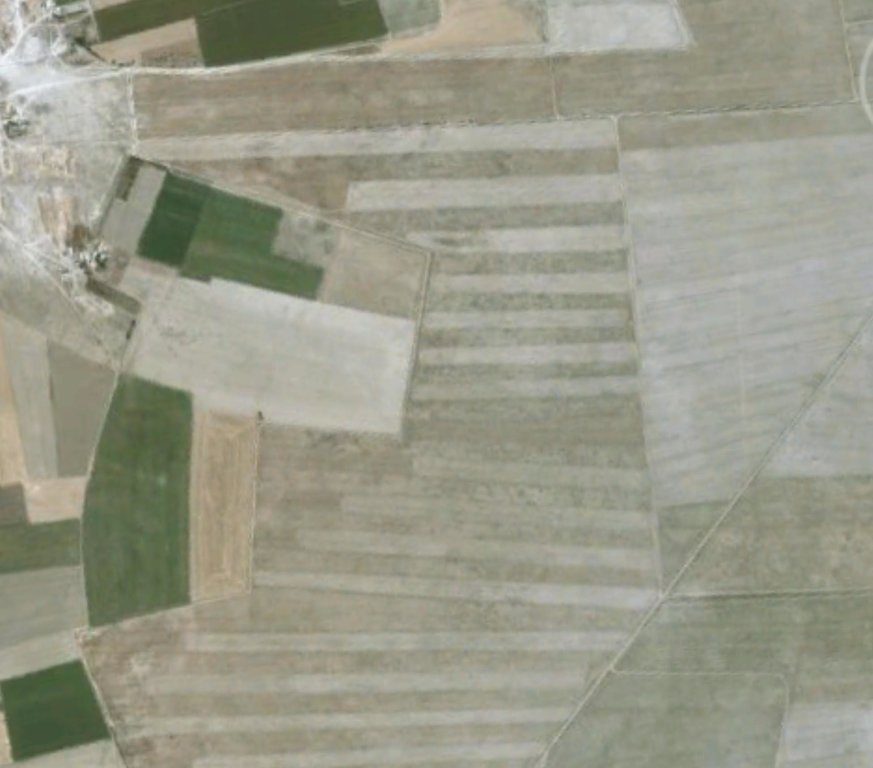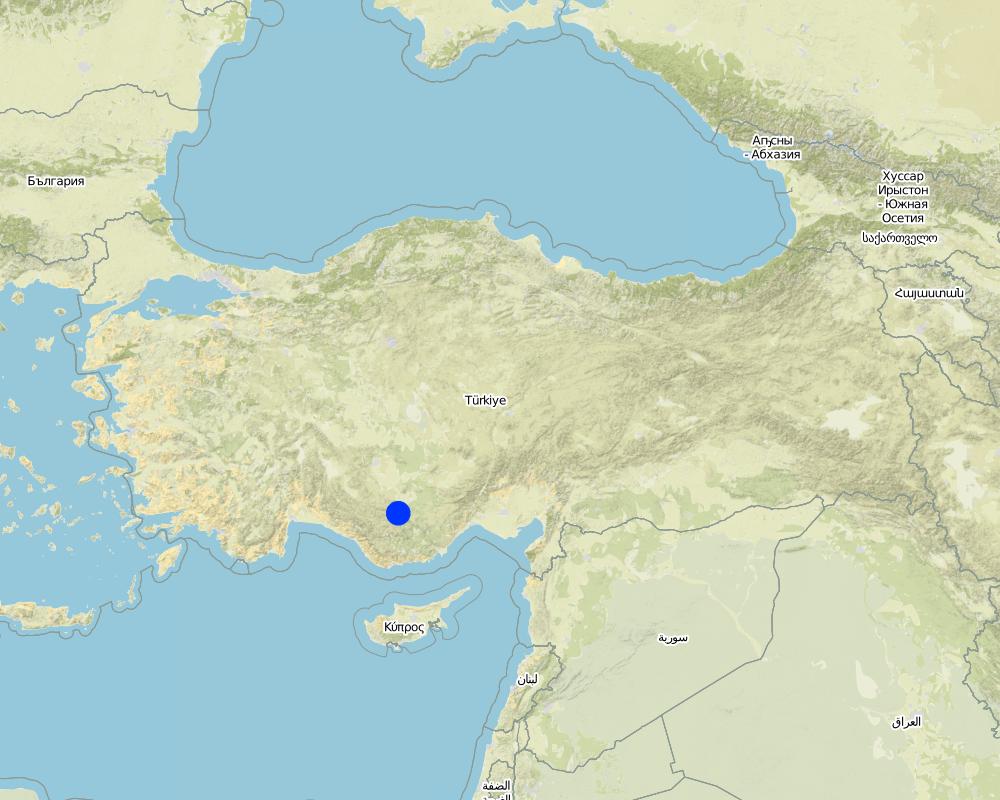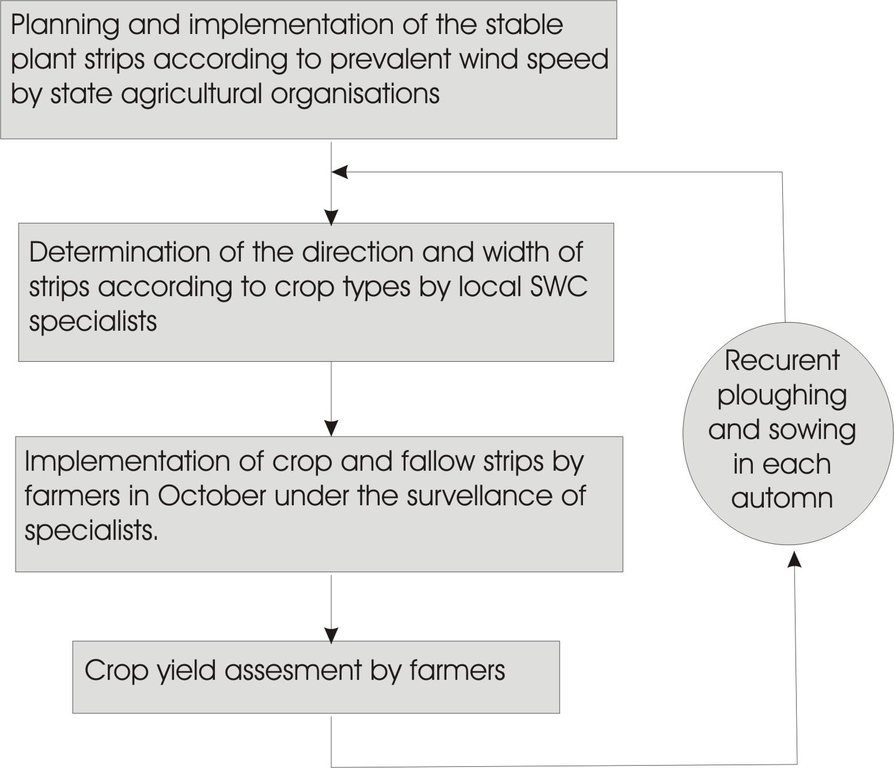Crop Production [土耳其]
- 创建:
- 更新:
- 编制者: Mehmet Zengin
- 编辑者: –
- 审查者: Fabian Ottiger
approaches_2423 - 土耳其
查看章节
全部展开 全部收起1. 一般信息
1.2 参与方法评估和文件编制的资源人员和机构的联系方式
有助于对方法进行记录/评估的机构名称(如相关)
University of Selcuk, Faculty of Agriculture (University of Selcuk, Faculty of Agriculture) - 土耳其1.3 关于使用通过WOCAT记录的数据的条件
编制者和关键资源人员接受有关使用通过WOCAT记录数据的条件。:
是
1.4 SLM技术问卷的参考
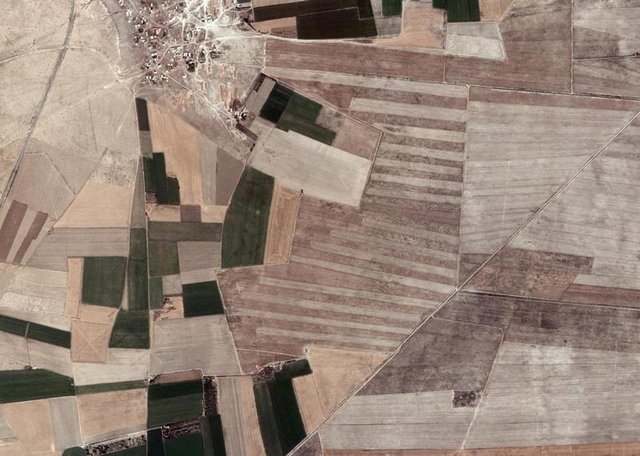
Strip farming [土耳其]
Strip farming is a kind of an agriculture method that cereals are sowed as strips which are 50 m witdh (strip-fallow-strip). Strips are perpendicular to wind direction in dropugth areas.
- 编制者: Mehmet Zengin
2. SLM方法的描述
2.1 该方法的简要说明
Adopting of the strip cropping-fallow-strip cropping system by farmers, with support from local SWC specialists and state agricultural organisations.
2.2 该方法的详细说明
该方法的详细说明:
Aims / objectives: To prevent soil erosion by wind and enhance crop yield. Basically altered fallow strips serve the retention of soil particles and minimize wind erosion. Plant strips in combination of cerela strips further decrease the wind speed.
Methods: Planning and implementation of strip technology. To sow cereals as strips of 50 m wide perpendicular to wind direction, behind it fallow again plant strip. So wind speed decrease and soil loss is minimized.
Stages of implementation: Every year this method is applied on October. Fallow and cereal strips are changed each year.
Role of stakeholders: The state agricultural organisations plan and implement the stable plant strips according prevalent wind speed. The local SWC specialists determine the direction and width of the strips according the crop types. They also supervise the implementation. Farmers are expected to implement the strips, following the direction and width of strips and to asess crop yield.
2.3 该方法的照片
2.5 采用该方法的国家/地区/地点
国家:
土耳其
区域/州/省:
Konya
有关地点的进一步说明:
Karapınar
Map
×2.7 方法的类型
- 传统/本土
2.8 该方法的主要目的/目标
The Approach focused on SLM only
To enable land users to conserve the soil from wind erosion
The SLM Approach addressed the following problems: Lack of technical knowledge.
2.9 推动或妨碍实施本办法所适用的技术的条件
法律框架(土地使用权、土地和水使用权)
- 启动
The existing land ownership, land use rights / water rights helped a little the approach implementation: No problem, because farmers can easily apply the approach in their fields.
了解SLM,获得技术支持
- 阻碍
Farmers can not give the benefits of measures since lack of knowledge
Treatment through the SLM Approach: more rigorous information should be given
3. 相关利益相关者的参与和角色
3.1 该方法涉及的利益相关者及其职责
- 当地土地使用者/当地社区
Women are not a part of planning and implementation of strip farming. They are passivelly involved in certain secondary activities such as weeding etc.
Farmers applied strip farming method with the help of SWC spelialist.
- SLM专家/农业顾问
- 国家政府(规划者、决策者)
3.2 当地土地使用者/当地社区参与该方法的不同阶段
| 当地土地使用者/当地社区的参与 | 指定参与人员并描述活动 | |
|---|---|---|
| 启动/动机 | 无 | |
| 计划 | 无 | |
| 实施 | 互动 | Implemantion is basically done by individual land owners with consulancy of SWC specialist |
| 监测/评估 | 互动 | |
| Research | 无 |
3.3 流程图(如可用)
具体说明:
Flow chart for crop production by strip farming
作者:
Mehmet Zengin (Ziraat Fakültesi, Selçuk Üniversitesi, Konya)
3.4 有关SLM技术选择的决策
具体说明谁有权决定选择要实施的技术:
- 仅限SLM专家
解释:
Specialist from state organizations determine the most suffered wind erosion areas and make some protection plans. These plans are realised by land users which are consulted by SWC specialists.
Decisions on the method of implementing the SLM Technology were made by by SLM specialists alone (top-down)
4. 技术支持、能力建设和知识管理
4.1 能力建设/培训
是否为土地使用者/其他利益相关者提供培训?:
是
明确受训人员:
- 土地使用者
- 现场工作人员/顾问
如果相关,请说明性别、年龄、地位、种族等。:
Only male farmers attend the training meetings.
培训形式:
- 示范区域
- 公开会议
- 课程
4.2 咨询服务
土地使用者有权使用咨询服务吗?:
是
说明/注释:
Advisory service is quite adequate to ensure the continuation of land conservation activities
4.3 机构强化(组织发展)
是否通过这种方法建立或加强了机构?:
- 是,非常
具体说明机构的强化或建立程度:
- 本地
具体说明支持类型:
- 能力建设/培训
- 设备
4.4 监测和评估
监测和评估是该方法的一部分吗?:
是
注释:
bio-physical aspects were ad hoc monitored through measurements; indicators: soil loss by wind
economic / production aspects were ad hoc monitored through measurements; indicators: wheat yield
There were few changes in the Approach as a result of monitoring and evaluation: Farmers understand the efficacy of strip cropping in prevention of wind erosion.
4.5 研究
研究是该方法的一部分吗?
是
明确话题:
- 生态学
提供进一步的细节,并指出是谁做的研究:
SWC specialists studied the effects of strip cropping on soil loss.
Research was carried out on station
5. 融资和外部物质支持
5.1 该方法中SLM组成部分的年度预算
如果不知道准确的年度预算,请给出一个范围:
- 2,000-10,000
注释(例如主要的资助来源/主要捐助者):
Approach costs were met by the following donors: government (Planning, applying, material): 20.0%; local community / land user(s) (implementation of the approach): 80.0%
5.2 为土地使用者提供财政/物质支援
土地使用者是否获得实施该技术的财政/物质支持?:
是
5.3 对特定投入的补贴(包括劳动力)
- 设备
| 具体说明哪些投入得到了补贴 | 程度如何 | 对补贴做出具体说明 |
|---|---|---|
| 机械 | 部分融资 | |
- 农业
| 具体说明哪些投入得到了补贴 | 程度如何 | 对补贴做出具体说明 |
|---|---|---|
| 种子 | 部分融资 | |
| 化肥 | 部分融资 | |
如果土地使用者的劳动力是一项重要的投入,那么是不是:
- 以粮换工
注释:
Also voluntary
5.4 信用
是否根据SLM活动的方法给予信用值?:
否
6. 影响分析和结论性陈述
6.1 方法的影响
该方法是否帮助土地使用者实施和维护SLM技术?:
- 否
- 是,很少
- 是,中等
- 是,支持力度很大
Strip cropping system was appreciated by the farmers.
该方法是否改善了阻碍SLM技术实施的土地使用权/用户权问题?:
- 否
- 是,很少
- 是,中等
- 是,支持力度很大
Farmers could not give up their habits of sowing a field completely. The problem is likely to be overcome in the near future. Training, course, demonstrations by the govenment perhaps will encourage the farmers in applying this technique.
Did other land users / projects adopt the Approach?
- 否
- 是,很少
- 是,中等
- 是,支持力度很大
Farmers around settlements heard and visited strip farming system for plant production and conservation of wind erosion and liked and adopted it.
6.2 土地使用者实施SLM的主要动机
- 增加利润(能力),提高成本效益比
- 声望、社会压力/社会凝聚
- 环境意识
6.3 方法活动的可持续性
土地使用者能否维持通过该方法实施的措施(无外部支持的情况下)?:
- 是
6.4 该方法的长处/优点
| 土地使用者眼中的长处/优势/机会 |
|---|
| This approach is usefull to conserve wind erosion, but we can not give up our customs. (How to sustain/ enhance this strength: Field experiments, demonstrations and training.) |
| 编制者或其他关键资源人员认为的长处/优势/机会 |
|---|
| Plant crop approach was successfull for strip farming system in the wind region. (How to sustain/ enhance this strength: It is necessary law/rule/forcing.) |
6.5 该方法的弱点/缺点以及克服它们的方法
| 土地使用者认为的弱点/缺点/风险 | 如何克服它们? |
|---|---|
| It is difficult partail sowing in some field. Moreover area required for fallow is an important weakness. | By the encouragements. |
| 编制者或其他关键资源人员认为的弱点/缺点/风险 | 如何克服它们? |
|---|---|
| Adoption and application of this measure by farmers are difficult due to sociological reasons. | By training and demonstration. |
7. 参考和链接
7.1 方法/信息来源
- 实地考察、实地调查
- 与土地使用者的访谈
链接和模块
全部展开 全部收起链接

Strip farming [土耳其]
Strip farming is a kind of an agriculture method that cereals are sowed as strips which are 50 m witdh (strip-fallow-strip). Strips are perpendicular to wind direction in dropugth areas.
- 编制者: Mehmet Zengin
模块
无模块


